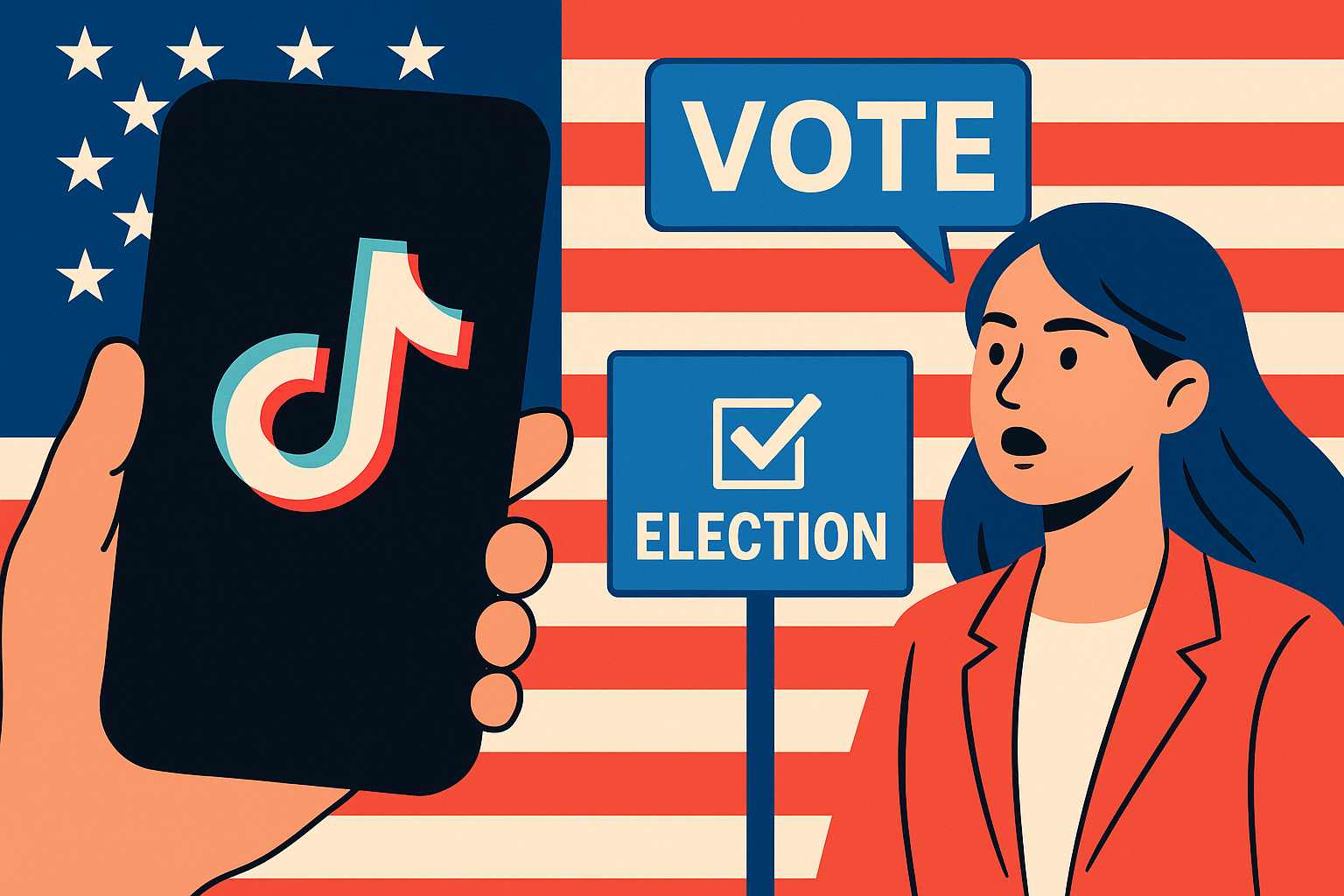Introduction: The New Political Battleground
In the past, campaign managers obsessed over TV ads, newspaper endorsements, and radio talk shows. But in 2025, the real political battlefield is no longer the living room TV — it’s the smartphone in every voter’s pocket. With the 2026 U.S. midterms approaching, platforms like TikTok, Instagram Reels, and YouTube Shorts are set to play an outsized role in shaping opinions, spreading messages, and mobilizing younger voters.
For the first time in history, a generation raised on algorithms, memes, and viral soundbites will likely hold the key to who controls Congress. Welcome to what political analysts are already calling “The TikTok Election.”
1. The Power of the Scroll: Why Short-Form Video Dominates
TikTok has over 150 million U.S. users, with the majority under 35. Add to that Instagram Reels and YouTube Shorts, and you have the primary news source for Gen Z and Millennials — now the largest voting blocs in America.
Unlike traditional ads, social media videos:
-
Reach users passively while scrolling.
-
Spread virally without the need for massive ad budgets.
-
Use memes, humor, and trends to deliver political messages in seconds.
Campaign strategists are adapting. Instead of 60-second TV spots, they’re now producing 10-second meme clips designed to fit the platform’s rhythm.
2. Lessons from 2024: The First “Social Media First” Election
The 2024 presidential race was the first true “social media-first” campaign.
-
TikTok trends helped candidates connect with younger voters who don’t watch TV news.
-
Influencers, rather than traditional journalists, were key in framing political narratives.
-
AI-powered ads, microtargeted on social platforms, proved more effective than mass-market television campaigns.
These strategies worked so well in 2024 that they’re now being refined and scaled for 2026.
3. Gen Z and Millennials: The Decisive Voting Blocs
Together, Gen Z and Millennials make up nearly 45% of the U.S. electorate.
-
Gen Z (18–29 years old): More politically engaged than many expected, with high turnout in 2020 and 2024. They overwhelmingly get their news from TikTok, YouTube, and Instagram.
-
Millennials (30–45 years old): Split between digital-native consumption and more traditional sources, but still heavily engaged on social media.
In a midterm where small margins can swing control of the House and Senate, these two groups could decide everything. Campaigns that fail to meet them online risk irrelevance.
4. The AI Factor: Political Ads in 2026
AI is changing the game in two key ways:
-
Hyper-targeted ads: Campaigns are using AI tools to generate thousands of micro-variations of ads for different voter segments. One message may emphasize healthcare to suburban parents while another stresses climate action for college students — all generated in real time.
-
Deepfakes and misinformation: The danger is rising. AI-generated political content — from fake speeches to manipulated debate footage — is harder to detect. Platforms are scrambling to enforce authenticity checks, but experts warn 2026 could be the first election where deepfake videos sway public opinion at scale.
5. Regulation and the TikTok Question
Washington lawmakers are already eyeing restrictions. TikTok, still facing national security scrutiny over its Chinese ownership, could face new regulations before the election. Some lawmakers are pushing for an outright ban, arguing that foreign influence could sway American politics.
Meanwhile, the Federal Election Commission (FEC) is considering new rules for AI-generated political content, requiring transparency labels on deepfake ads. But critics warn that regulation may come too late to contain the chaos.
6. The New Kingmakers: Influencers
Forget political pundits on CNN or Fox News. In 2026, influencers will be the new kingmakers.
Creators with millions of followers have already shown they can shift narratives overnight. Politicians are recruiting influencers as unofficial campaign surrogates, hoping to tap into audiences that traditional media simply can’t reach.
The key difference? Influencers aren’t bound by the same editorial rules as journalists. This makes them powerful — but also unpredictable.
7. Predictions: The TikTok Election in Action
So, will TikTok and social media decide the 2026 midterms? Several scenarios are likely:
-
Youth Turnout Surge: If TikTok campaigns energize Gen Z voters, Democrats could gain an edge — since younger voters lean progressive.
-
Misinformation Chaos: A flood of deepfakes could erode trust in political institutions, depressing turnout.
-
Influencer Power: A single viral campaign could swing a tight Senate or House race.
Either way, the old playbook of TV ads and stump speeches is dead. Politicians who fail to adapt risk political extinction.
Conclusion: The New Age of Politics
The 2026 midterms won’t just be about policy; they’ll be a referendum on the future of digital democracy. Will Americans embrace social media as a legitimate political arena, or will concerns about misinformation, manipulation, and foreign influence push regulators to rein it in?
One thing is certain: the next Congress will be shaped not only in town halls and rallies but also in the infinite scroll of TikTok feeds across America.
The age of the TikTok Election has officially arrived.
